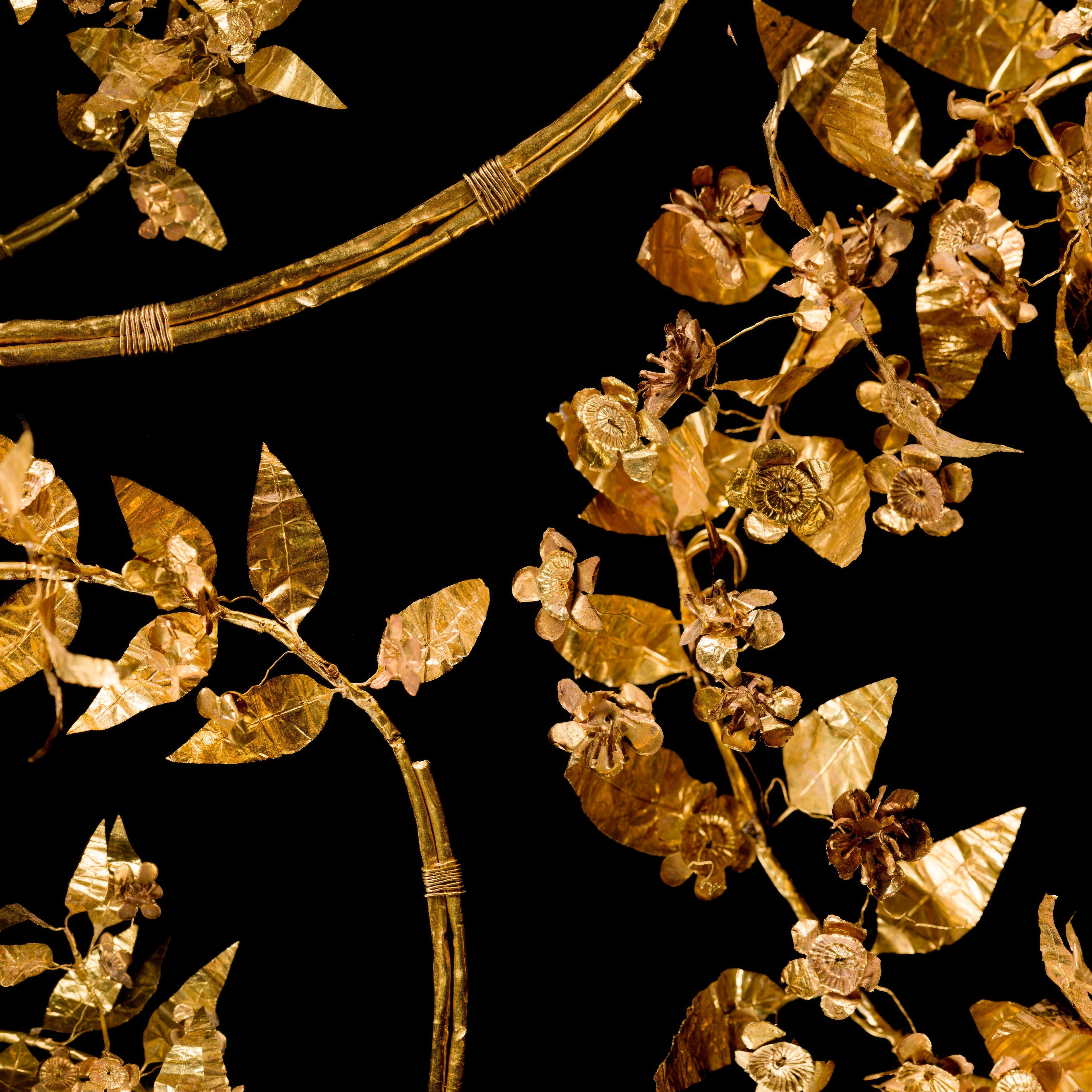Gold Weight in Form of Sankofa Bird
1 of 3
About this Brooklyn Icon
The Brooklyn Museum is commemorating its 200th anniversary by spotlighting 200 standout objects in its encyclopedic collection.
During the 17th century, the Akan kingdoms in modern-day Ghana and Côte d’Ivoire—including the Asante empire, a powerful Akan stronghold—were members of a complex trading network that connected North, East, and West Africa. Merchants used mrammuo (gold weights) as counterbalances for gold dust, the Akan currency. This example depicts a mythical sankofa bird, with its head turned backward. A prominent symbol in the adinkra writing system used by the Akan peoples of Ghana, the sankofa bird visually represents an Akan proverb in Twi: “Sε wo werε fi na wosan kofa a yenkyiri,” loosely meaning “return and get it.” This proverb underscores the importance of taking past experiences into consideration.
A seasoned Akan merchant would have had a full trading set for measuring gold dust, including scales, spoons, storage, and a complete weight family. Made from copper alloy or brass using the lost-wax casting method, weights created between circa 1500–1700 C.E. often feature geometric motifs that represent Akan proverbs and concepts.
The Brooklyn Museum has a significant holding of Akan trading sets dating from the 15th to 20th century. This mrammuo was featured in two important long-term installations at the Museum: African Innovations (2014) and Double Take: African Innovations (2018), which marked the first time that the Museum focused on a historical overview of the Arts of Africa collection.
Object Label
Gold was extremely important in the economic and political life of the Akan kingdoms of southern Ghana and Côte d’Ivoire. Until the mid-nineteenth century, gold dust was the primary form of currency in the region. In order to measure precise amounts of gold, an elaborate system of weights, usually made of cast brass, developed by the seventeenth century. Gold weights took many forms: simple geometric shapes; animals, such as leopards or birds; objects, such as chairs or swords; and human figures. The figures, animals, and objects are often associated with proverbs. The <i>sankofa</i> bird, with head turned backward, represents the proverb “One must turn to the past to move forward.”<br />
Caption
Akan. Gold Weight in Form of Sankofa Bird. Brass, 1 x 2 3/4 x 1 1/4 in. (2.5 x 7 x 3.2 cm) mount: 3 × 1 1/4 × 1 1/2 in. (7.6 × 3.2 × 3.8 cm). Brooklyn Museum, Carll H. de Silver Fund, 45.11.5. Creative Commons-BY (Photo: Brooklyn Museum, 45.11.5_right_PS22.jpg)
Tags
Gallery
Not on view
Collection
Gallery
Not on view
Collection
Culture
Title
Gold Weight in Form of Sankofa Bird
Geography
Place made: Ghana
Medium
Brass
Classification
Dimensions
1 x 2 3/4 x 1 1/4 in. (2.5 x 7 x 3.2 cm) mount: 3 × 1 1/4 × 1 1/2 in. (7.6 × 3.2 × 3.8 cm)
Credit Line
Carll H. de Silver Fund
Accession Number
45.11.5
Rights
Creative Commons-BY
You may download and use Brooklyn Museum images of this three-dimensional work in accordance with a Creative Commons license. Fair use, as understood under the United States Copyright Act, may also apply. Please include caption information from this page and credit the Brooklyn Museum. If you need a high resolution file, please fill out our online application form (charges apply). For further information about copyright, we recommend resources at the United States Library of Congress, Cornell University, Copyright and Cultural Institutions: Guidelines for U.S. Libraries, Archives, and Museums, and Copyright Watch. For more information about the Museum's rights project, including how rights types are assigned, please see our blog posts on copyright. If you have any information regarding this work and rights to it, please contact copyright@brooklynmuseum.org.
Have information?
Have information about an artwork? Contact us at




